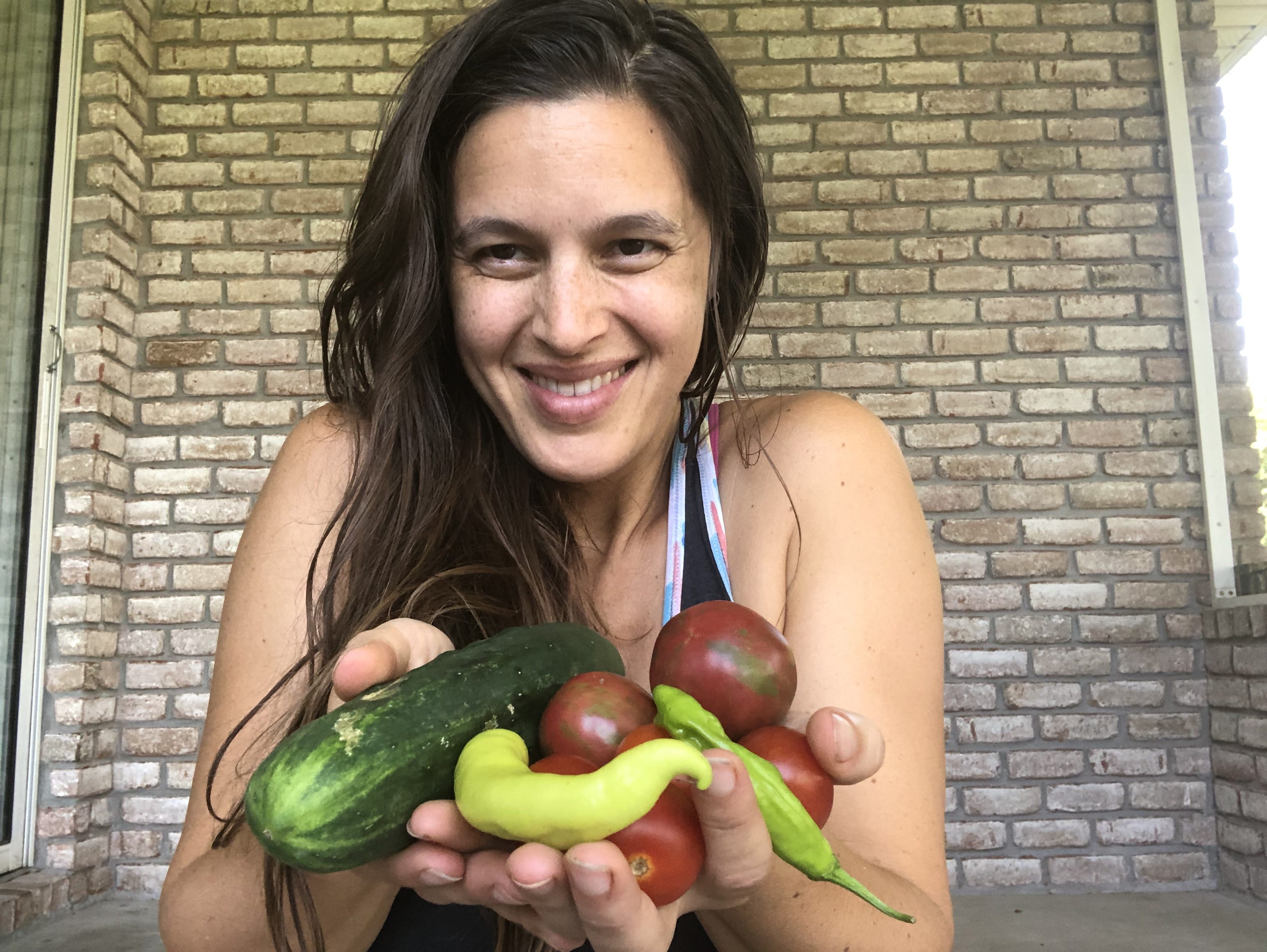Have you heard of seasonal eating? Eating seasonally is nothing new. It’s what our ancestors did to survive and essentially what most people did until the globalization of food changed things. Instead of eating whatever you could grow in your garden or forage from the forest, you can go to the grocery store and grab a container of strawberries grown in California, no matter what season it is.
Seasonal eating has become a bit of a hot topic these days. Health experts and doctors are both saying we should be doing more of it, so what’s the deal?
Seasonal eating refers to the idea or practice of eating foods that grow in the season you’re eating them. So for example this means eating berries and tomatoes in the summer, rather than eating them in the winter.
There’s also a slight difference between eating seasonally and eating locally. Eating locally can also mean eating seasonally because if you’re eating foods grown in your local environment, you are by default, eating seasonal foods.
Eating seasonally, however, does not necessarily mean you are eating locally. For example, oranges tend to be late-fall/winter fruits. If you live in a place where these fruits grow and thrive, you might be able to get them locally. If you don’t, you’re likely to still get them at the grocery store. They’re also likely to be more abundant at the grocery store during the winter months.
I personally think eating seasonally is awesome, but it can also be a huge adjustment for people who aren’t used to it. I’m going to share some seasonal eating pros and cons so that you can get an idea of whether or not eating seasonally and locally is the right choice for you.
Seasonal Eating Pros and Cons
Pros~
Food is More Fresh and Tasty
There is nothing quite like biting into a fresh strawberry that was picked just hours before you bought it. This is because the closer to harvest a fruit or vegetable is, the more potent its taste will be. That same strawberry is also more dense with nutrients within the first hours and days of picking than when it is packed, cooled, shipped, unpacked, and set on the shelf of your local grocery store several days later.
Both the quality of taste and nutrient density are higher when your fruits and veggies are more recently harvested. Both drop drastically after just a few days out of the ground, off the vine, or off of the tree.
So if you’re eating foods that have to travel long distances from another ecosystem because they can’t be grown locally during a particular season, the food won’t taste as good or have the same nutritional value.
Better for Your Health
Not only is your food more full of nutrients when it’s fresher, but when you’re eating seasonally your digestion will be healthier.
Think of it this way: Mama Earth knows what’s up. In the summer, the foods that thrive are a little sweeter and full of water. Makes sense, right? Summer is hot and your body needs natural ways to cool off.
In autumn, when the weather starts to turn cold, you start to see slightly more dense foods growing, like apples and pears and butternut squash. This is helping your body adjust to the cooler temperatures, while also giving you food that is slightly heavier to help you fortify for winter.
In the winter, not much grows but lots of food can be stored and last in cold cellars. What does grow is fairly hearty, like winter squash, potatoes, winter greens, and root vegetables. These will help you feel fuller, faster so you can make it through winter, while also warming you because they are more dense.
In the spring, you’ll start to see lots of greens — especially bitter greens, which will help your body lighten it’s winter load so to speak.
When you eat things out of season, you make it harder on your digestive system because you’re eating things that make your digestion work overtime. Think of raw foods like tomatoes, watermelon, or cucumbers in the winter or heavier foods like turnips or winter squash in the summer.
Produce isn’t Covered in Wax or Preservatives
This is a small thing, but I think it matters. I don’t really like the idea of consuming wax on apples or peppers. In order to keep these fresh, lots of larger grocery chains will coat their produce with wax or another type of preservative so the food stays fresher. Or has the appearance of being fresher.
Supports the Local Economy and Ecology
This is a big one to me. Seasonal eating doesn’t mean you have to eat locally, but it’s a lot easier to eat seasonally if you’re frequenting local farmer’s markets. Small farmers are really what we need more of, as opposed to the big commercial farms. This is for a few reasons.
First, it’s better for the soil. While large scale farms often grow one or 2 things all year long, small farms grow their food seasonally in the same fields, which means the soil stays healthy because they’re rotating their crops. Even if this isn’t 100% the case, it’s still better for the soil because they’re usually not growing the exact same crop year round because they can’t. So the soil gets a break.
Second, small farmers generally have better practices for the environment. Again, this isn’t always true but it frequently is. And many are organic, even if they can’t use the term “organic” on their produce. This is mostly because it’s super expensive to get certified organic and many small farms can’t afford this.
Third, I’d rather invest locally and keep money circulating within my community.
Food Diversity
This is simply the idea that if you’re paying more attention to what’s in season, you’re likely to eat a more diverse diet of foods instead of just eating the same things year round. Again, this is way better for your health and digestion. It also means you can try new foods and experiment in the kitchen. I know for some people that’s daunting and not as fun, maybe even more of a con. For me, I think it gives me more tools in my kitchen toolbox.
You Can Learn New Skills
If you want to preserve the season, you can also learn new skills like canning or pickling, which is pretty cool. As a bonus, this means you can have peaches in the middle of winter if you want a treat or have the ability to make a strawberry pie after strawberry season is over. Or you can make blueberry syrup and use it on pancakes like I do for my family!
Makes You Look Forward to the Seasons and the Foods They Provide
Honestly, this is the one that was the hardest to adjust to and also now my favorite. I can’t wait for strawberry season because I know how delicious strawberries will be when they’re ripe and fresh. I refuse to eat store bought because they pale in comparison. Same with tomatoes.
I’ve also noticed that I’m less likely to eat dark, leafy greens in late spring and early summer because they’re almost never available where I live in the south during those months. However, as summer wears on, I find myself craving them again and back they go into my diet.
This helps me tune in more to nature and also to the needs of my body, which I think is pretty cool.
Cons~
Your Eyes Are Bigger than Your Cupboard
This is a bit more of a farmer’s market issue for me. I see all of the tasty, fresh food and I want all of it, even if I don’t need all of it. Sometimes that means food can go to waste if I’m not careful. This also means it can be tougher on my wallet.
However, if you get smart about who you’re buying from and start to know who is selling certain items for less (or more), you can make better purchases. This can take a little time and planning, but in the long run will make seasonal eating a lot easier.
Winter is Hard
Not as much food grows in winter, unless you live in southern California or Mexico. This can make seasonal eating limited, challenging, and less fun.
One of the workarounds is to go to know your spice cabinet a little better.
Another option is to learn a skill like canning, freezing, or drying and use some of the foods you preserve in the summer in soups or other cooked foods.
And you can also cut yourself a little slack. You don’t have to eat exclusively seasonal, especially when you first start. You can get some seasonal staples and combine with other food items that might not be super local, but still fit the “seasonal criteria” of aligning with the season.
Picky Kids Makes Seasonal Eating Tough
My kids would eat strawberries and apples year round if I let them. And sometimes, I do cave and get things out of season for them.
Kids are notoriously picky. For those of you who have kids who will eat anything, consider yourselves blessed beyond measure. If you’re like me and you have kids who’d rather eat pretzels and animal crackers and anything pre-packaged in plastic, seasonal eating is a massively frustrating endeavor.
On the other hand, as they get older my kids know when things are in season and when they aren’t. They complain about it less and eat what’s available. Or they don’t.
Living in a Food Desert
I never understood what a food desert was until I lived in southeast New Mexico. I drove over an hour every Saturday to get to a farmer’s market that had a reasonable amount of fresh, local food.
My town was tiny and did have a farmer’s market, but very little produce. This town, over an hour away, had a larger market with more produce and more variety. Not surprisingly, it was also closer to Mexico.
The larger town also had a co-op and better grocery stores, so I’d do all of my food shopping on one day which made the drive worth it.
Still, it was a haul. And living in a place with very little food grown locally was challenging.
Meal Planning and Prep Can Be Harder
If you’re not used to seasonal eating, it can be a tough adjustment. You might not know what is in season (here’s a handy guide if you’re not sure) and because of this, you might feel at a loss with what to cook. It might even be overwhelming to get started.
Cool thing is, there are lots of resources out there that you can use to create simple, seasonal meals.
My own blog, for example, is organized by season. So if you look for an entry in May, you’ll likely find recipes with foods that flourish in May. I even have chili recipes for every season. Find my summer chili here and my winter chili here.
The point is that if you do a little research and planning, seasonal eating isn’t too hard.
So, how are you feeling about seasonal eating now that you know the pros and cons?
The best time of year to explore seasonal eating is summer and autumn, so go on out there and find a farmer’s market and see what’s available. Check out a few recipes on my blog and go on a seasonal eating adventure!




